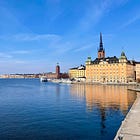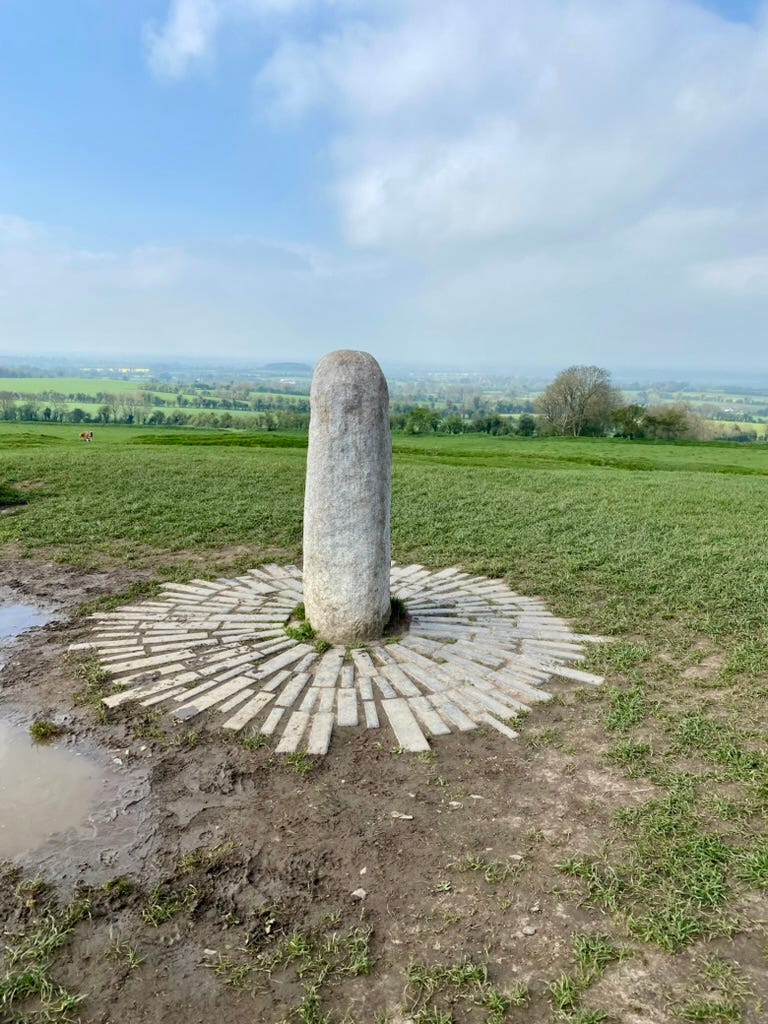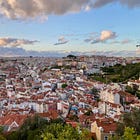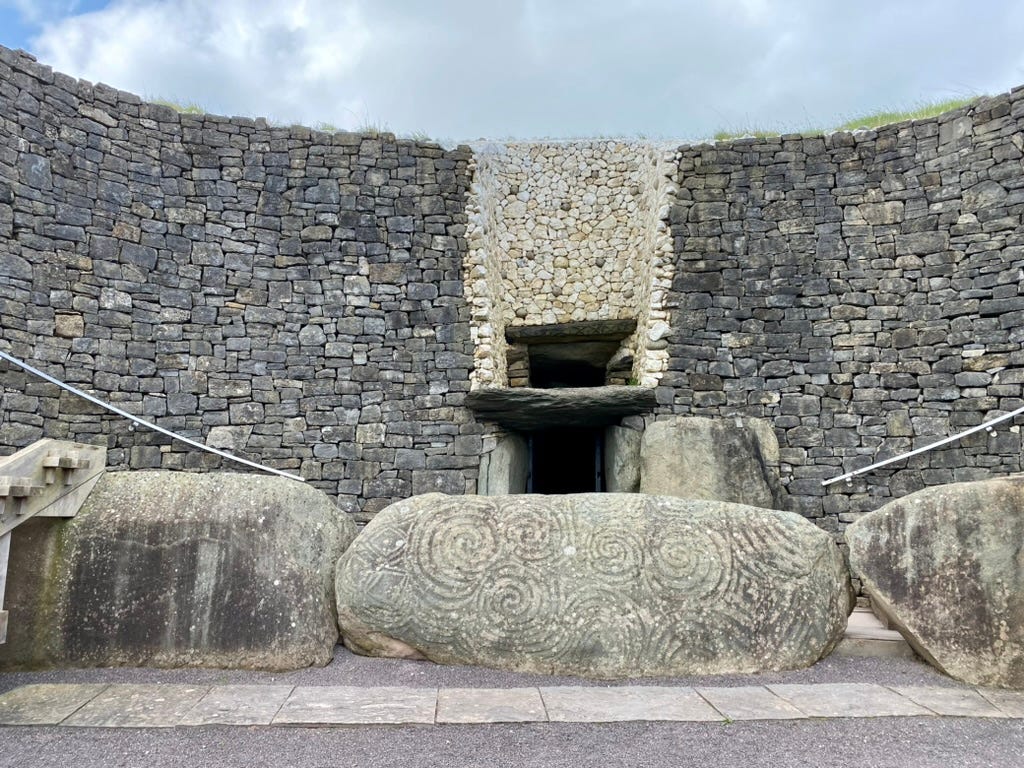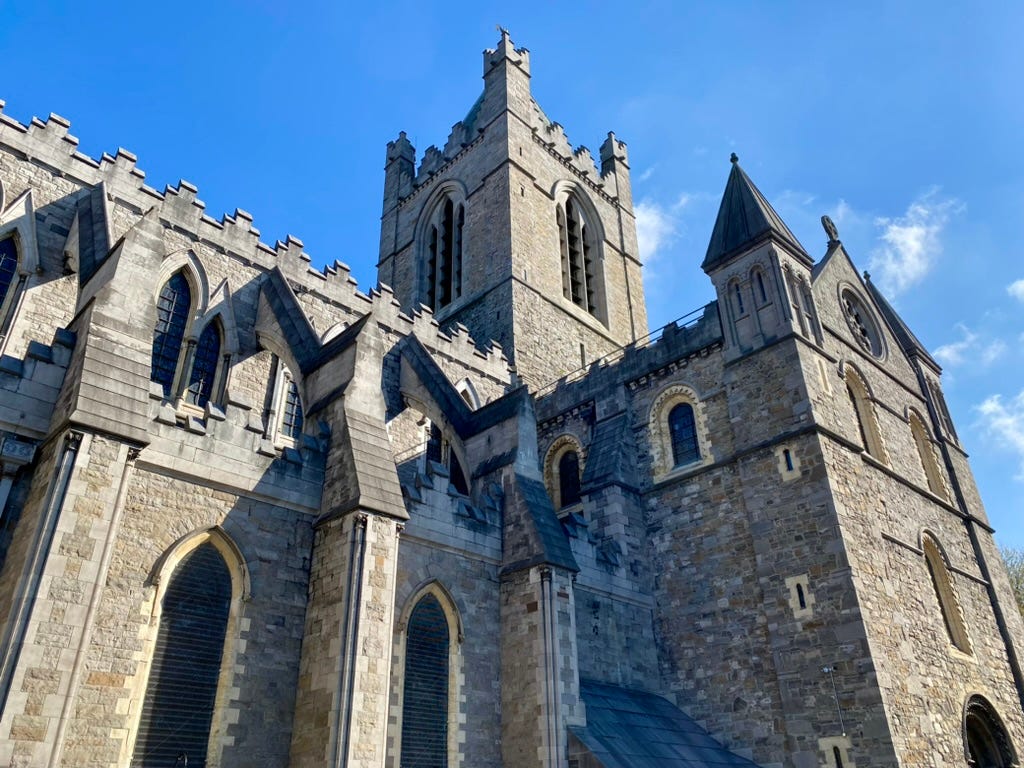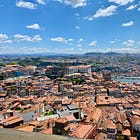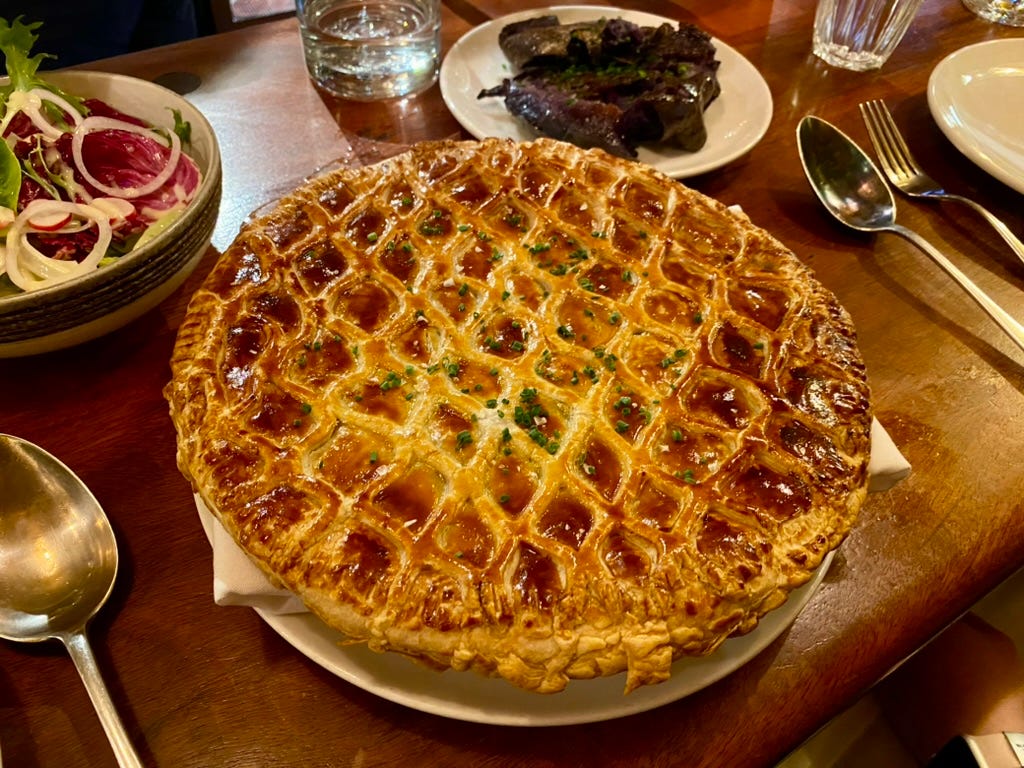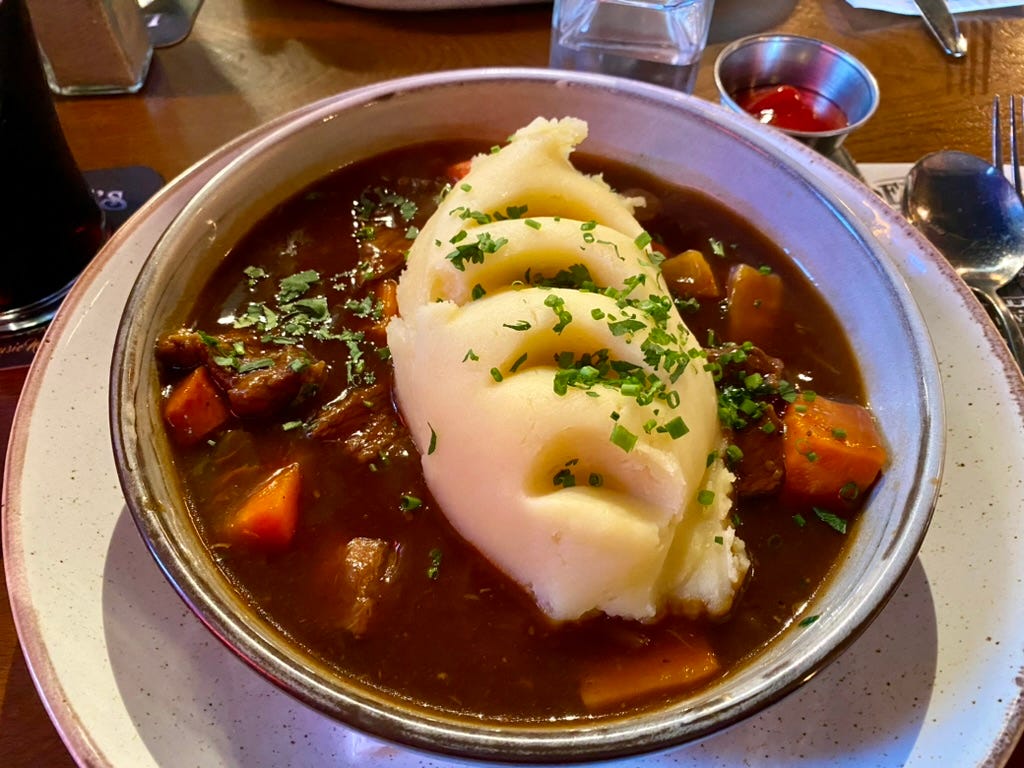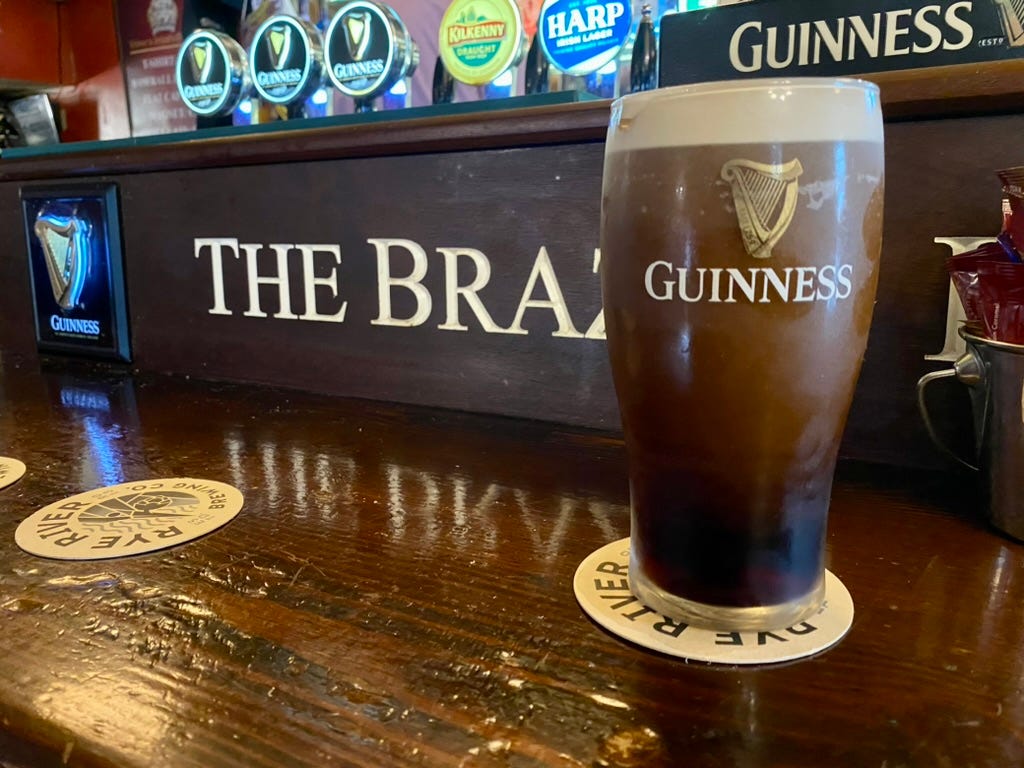Our Travel Guide to Dublin
The best things we did, our favorite pubs, and what to know before you go to Ireland's capital
Never before in human history has it been so easy to learn about a place before you travel there. You can explore a city on an interactive map, take a vicarious tour of landmarks through strangers’ pictures and videos, and find the best places to eat according to both local foodies and aggregated tourist rankings. The problem is, sorting through and synthesizing advice from so many different sources can be overwhelming. So when my wife Lizzie and I travel, we try to pay it forward afterwards by writing the travel guide we wish we’d had ourselves.
We recently got back from an amazing trip to Dublin (and Stockholm). We are neither travel agents nor experts in Irish culture, and make no claims to be the authoritative source on anything herein. But we’re pretty darn good at planning vacations, if I do say so myself. So consider this the equivalent of what we would tell you if you called us to say you were going to the Dublin area — as many friends who are probably reading this did for us — but in rough essay form. We hope that future travelers find this helpful and, almost as importantly, that people who like reading about new places will get some vicarious joy from scrolling through it.
Basics and Logistics
With the exception of Niagara Falls, Dublin was the most familiar-feeling foreign city I’ve ever been to. Frankly, the place it reminded us of most was Boston. Whether because Irish culture is so pervasive in America, because Dublin caters so much to out-of-towners, or because there’s an uncanny-valley feeling about being in another country where English is the default language, we had a particularly hard time differentiating between tourist traps and places where actual locals would go. If you didn’t know any better, you might think you were in a large city in the Amtrak Corridor that happened to run on euros.
We really enjoyed our time in Dublin, though if you’re looking for a destination where you can experience a new culture it wouldn’t be at the top of my list. We all have our own preferences for how much we want to expand our horizons figuratively while we do so literally — it’s probably not a coincidence that I’ve never been to a country that doesn’t use the Latin alphabet — but if that’s something you value, Dublin probably isn’t your ideal vacation spot. At the very least, make sure you get out into the surrounding countryside.
Our itinerary
We spent four nights in Ireland, with two full days devoted to exploring Dublin followed by two days of tours outside the city. Those first two days were pretty jam-packed, though frankly that was enough to cross all the major items off our to-do list. We booked a refundable trip outside the city for our last day in Ireland in case we wanted more time in Dublin proper, but we ended up caring more about seeing more of the country than spending another day in the capital.
Traveling to and from Dublin
As with Reykjavik a few years ago, Dublin is becoming a popular hub as a gateway from America to Europe. It was the cheapest nonstop overseas destination from Philadelphia, and there’s an increasingly good chance that that’s the case for your closest major airport too. The easiest way for us to get to Scandinavia was to take an Aer Lingus flight from Philly to Dublin, then book a separate itinerary from Dublin to Stockholm. We essentially gave ourselves a four-day layover on the way back.
Immigration was a breeze when we arrived from the U.S. — probably the fastest I’ve ever experienced after a transatlantic flight. Considering how long customs took when we went to Lisbon last year, we weren’t sure our three-hour layover would be enough to clear customs before our flight to Stockholm. We needn’t have worried. Even with a particularly long walk to our gate, we had time for a leisurely pint in the terminal before our second flight.
The Dublin airport conveniently allows passengers to go through U.S. immigration in advance so you’re treated as domestic arrivals when you land. That means going through three different security checkpoints spread out over a very long terminal before you depart, though even including a stroll through the duty-free store it took us under an hour.
Getting around Dublin
We like to walk as much as possible when we travel, and we ended up traversing the city entirely on foot. Aside from taxis to and from the airport (at least roughly cost-effective if you’re not traveling alone) and coach buses for our day trips, we walked literally everywhere we went in Dublin. The municipal buses looked easy and convenient but I can’t personally vouch for them.
Where we stayed
We stayed at the Arthaus Hotel near St. Stephen’s Green. When we went, it was the cheapest hotel in that neighborhood where the reviews weren’t filled with noise complaints. (From cursory glances at other dates, the relative cheapness may not be the case all the time.) The best thing about Arthaus was the location. It’s on a fairly quiet street — not something to take for granted, from what I’ve heard from other folks who’ve been to Dublin — while also being centrally located, within a mile of almost everywhere we went around the city. It wasn’t the nicest place I’ve ever stayed, but I would go back. The only specific complaint I can remember a couple weeks later is that it had the single slowest elevator I’ve ever ridden on. (I clocked it at 35 seconds from when the doors were shut in the lobby to when they started to open three floors up, which felt like an eternity to my bladder after a night of pub-hopping.)
Communicating
With the exception of the first row of writing on official signage, everything operates in English. If you’re reading this post, you’re fine.
Do and See
The best general advice we have for museums and historical sites in Ireland is to opt for a tour guide whenever possible. First because the customer-facing staff of the Office of Public Works, which runs most of the landmarks we visited in and around Dublin, were without exception engaging, knowledgable, and genuinely enthusiastic about the history they presented. But also because some places have a section of Norman or even Viking ruins accessible only with a guided tour, and we found a direct correlation between a site’s age and how interesting it was.
The other thing to know is that most sites have timed tickets with limited admissions available per slot, even if you’re not taking an official tour. This means walk-up tickets aren’t always possible and that even a same-day reservation might be hard to come by — Dublin Castle was sold out the first day we tried to go, and advance tickets for Kilmainham Gaol were completely booked up for all five days we were there (they open up some additional tours the day of).
Dublin Castle
Right in the center of the city lies perhaps Dublin’s most-unmissable landmark. Initially designed as a Norman fortress in the 13th century (atop even older Viking ruins), it was largely rebuilt a few hundred years later as an English royal palace and imperial administrative center. The State Apartments are worth a walkthrough if you like that sort of palatial splendor, and the gorgeous Chapel Royal was a fine consolation prize to visit while the oldest surviving tower was closed for renovations. But by far the coolest part was the underground excavation site where they’ve uncovered the walls of the original Norman structure and the Viking walls they built on top of.
Kilmainham Gaol
The story of Kilmainham Gaol is the story of modern Irish history. Built in the late 18th century, the notorious prison was where desperate Dubliners wound up during the Great Famine and where many generations of rebel leaders spent their final days. In its restored state, it has become an Alcatraz-like tourist attraction as well as a venue for music videos and art exhibitions. After your tour — equal parts fascinating and harrowing — you can quickly lose an hour in the museum with its exhibits on Irish penal history, the independence movement and civil war, and the last days of the martyred leaders who were executed in Kilmainham’s courtyards.
Trinity College
If you’re planning a trip to Dublin, this is probably already at the top of your to-do list. The 400-year-old university is internationally famous for two things: Its library, featuring the stunning Long Room dotted with busts of scholars and Irish leaders; and the Book of Kells, a 9th-century copy of the New Testament adorned with strikingly intricate illustrations. Try to go at an off-peak time — even with limited entries per timeslot, on a Sunday afternoon it was so crowded that we couldn’t read the placards or find the audioguide checkpoints in the introductory exhibit.
The old churches
Some of the most-historic sites in Dublin are its old churches. The most famous is St. Patrick’s Cathedral, which dates back to the 12th century and is stuffed to the rafters with history. Between the size of the crowd and the sheer volume of plaques and decorations it was honestly hard to take it all in, though the lively adjoining park is a great place to regain your bearings afterwards. Second in significance is Christ Church, a less-adorned yet still grand cathedral whose 11th-century crypt holds such historic artifacts as the oldest secular statues in Ireland and a copy of the Magna Carta. Lower-profile but perhaps even cooler is St. Audoen's, Dublin’s oldest parish church, where you can get an intimate look at the nearly millennium-old structures with hardly any other tourists around.
Irish Famine Exhibition
Not to be confused with the EPIC Museum (which we did not visit), the Irish Famine Exhibition almost feels like strolling through someone’s dissertation: A few dozen posters and a short looped video lining a minimalist storefront inside a shopping mall. Yet the story does not need high production value to be affecting. My wife, who is better-versed in Irish history than I am, didn’t learn much that she didn’t already know, but as someone with a “Fields of Athenry”-level knowledge of the Great Hunger, I found it educational, engrossing, and most of all enraging.
Irish Whiskey Museum
If you need a drink after visiting one of the more-sobering museums above but still want to learn more about Irish culture, this is the spot for you. My wife and I are relative whiskey novices; my favorite kind of whiskey is “and Coke.” As such, we didn’t have a specific distillery we cared about visiting, so we went to a place where the focus is on learning about whiskey, not selling a specific brand. The interactive tour was cheesy but fun, with elaborate sets and an engaging guide. We splurged on the combined tasting and blending experience, where we got to try four different representative styles of whiskey and design our own custom blends to take home.
Day trips
For all there is to do in Dublin, if you make it to Ireland, you’ll want to experience the famous verdant countryside. You can travel by train or rent a car, but as much as we like to set our own vacation itineraries, we’ve learned that when you’re driving to multiple landmarks in a single day, it’s easier and often cheaper to take an organized tour. We ended up doing two of them. The first was Mary Gibbons’ tour of the stunning Hill of Tara, home of both the famous seat of the High Kings of the Middle Ages and millennia-earlier burial mounds; and the unmissable Brú na Bóinne, where you can visit the amazing Neolithic passage tombs of Newgrange and Knowth. (Tour or not, find some way to get there.) Mary is a knowledgable historian who spent the bus rides contextualizing the sites we were about to see with a twist of dry humor. We also took tour through the Wild Rover company to the historic Kilkenny Castle, the gorgeous monastic site and hiking trails of Glendalough, and a working sheep farm. It was very cool to pack all those distant stops into one day, but each of the stops felt rushed, and we spent more of the tour experience on the bus than we did off of it.
Eat and Drink
Before we went to Dublin, I noticed that friends who’d been didn’t have many specific restaurant recommendations. Their consensus was to walk around until we found a café or pub that called to us. In retrospect I understand why. We didn’t have many superlative meals in Ireland, though it’s easy to get a pretty good one. So embrace the spontaneity and see where you stumble into.
One thing to be intentional about if you’re interested in it is going to a pub with traditional Irish music. As with fado in Lisbon, we’d heard that we’d find “rebel music” (a term that doesn’t translate well to the American context) purely by accident, but it turned out to be surprisingly difficult. We saw two different self-described traditional Irish musicians who played U2 covers. (I guess at this point they are old enough to count as “traditional.”) It took us until just before last call on our final night in town to find a bar band that at least had a fiddle.
Must-Try
Come hungry and plan your trip around going to…
Spitalfields
The single best meal we had on our trip was in a pub that happens to be a Michelin-recognized restaurant. At Spitalfields, the atmosphere is fun, the service is terrific, and the food…suffice to say you’re in for a treat. We started with the superb ‘ndjua and egg risotto, the decadent truffled cheese toast, and their signature beef-stuffed Parker House rolls. The main event was the cock-a-leekie pie for two: picture the best chicken pot pie you’ve ever had stewing beneath a gorgeously golden-brown flaky crust.
Considering the multiple courses and our many rounds of drinks this was also the priciest meal of our trip, but boy was it worth the splurge. Reserve a seat at Spitalfields’ beautiful bar right after you book your hotel. [Website]
Strongly Recommended
If you can get there, you'll be glad you made time for…
Devitt’s Pub
I wrote a couple paragraphs up that you don’t need a specific destination to find a good traditional pub. If you want one regardless, I’d recommend Devitt’s, if only for their terrific beef and Guinness stew: rich, hearty, and genuinely flavorful in the way that beef stews sometimes forget to be. My pint of Guinness was at least as good as any I had on our trip, and the ratio of Irish accents to Americans was the highest of any pub we visited. [Website]
Murphy’s Ice Cream
Some ice cream shops make really high-quality ice cream. Others offer fun, inventive flavors. Murphy’s does both. From brown bread to chocolate whiskey, there are a lot of flavors you’ll want to try — and you can, as the staff are particularly happy to offer tasters. [Website]
The Bald Barista
There’s a slew of cute coffee shops along the northern terminus of R114, and we went to a different one each day. But if we had tried The Bald Barista first, we might not have gone anywhere else on the block. Their coffee creations are really good and they have a huge variety of sweet and savory pastries, including the best sausage roll I’ve ever eaten. [Facebook]
Recommended
Don’t go too far out of your way, but we can vouch for these places if you’re in the mood for…
Thai food
You’re not going to the pub for every meal, right? (Though no judgment if you are.) If, like us, you sometimes just need a big bowl of hot noodles, Thai Basil has you covered. I have a shellfish allergy, which sometimes makes going to new East Asian restaurants a challenge. The staff here were particularly thoughtful in going through the menu to figure out what was safe for me or could be modified for me.
Steak
Aside from the fact that they offer a cool steak flight with four different cuts of meat to taste, I don’t have much to add about Boeuf that wasn’t already said in one of my favorite restaurant reviews I’ve ever read:
Brunch
When I asked friends who’d been to Dublin for their food recommendations, almost all of them told me they’d been to Gallagher’s Boxty House. Given its location in the heart of Temple Bar, it’s possible that American tourists are their only clientele. But if you get there early enough (before the hungover pubcrawlers wake up and the redeye passengers make their way into the city) it’s a good, quiet place for a filling Irish breakfast and a darn good Irish coffee.
Coffee shops
There’s a stretch of Aungier Street and South Great George’s Street right before they hit the River Liffey that may well have more cafés than pubs. The Bald Barista (listed above) was our favorite, but we also enjoyed the vegan wares at It’s a Trap, the bean-nerd vibes of Brew Lab, and a solid breakfast sandwich at KC Peaches.
Quick bites
A century-old Dublin institution, Leo Burdock has become a pilgrimage site for celebrities visiting town: “We like to think of Bruce Springsteen as a regular,” proclaims a sign listing a couple hundred famous eaters. A friend who’s from Ireland said they have the city’s best fish and chips, and in our limited experience we agree. Bunsen also serves a pretty good no-fuss burger.
Pubs
Here’s the part you scrolled down to read. Aside from the aforementioned Devitt’s, we enjoyed the more-than-just-Guinness beer selection at Porterhouse Temple Bar and the particularly kind bartender at Peadar Kearney's. If you’re okay with embracing the fact that you’re a tourist, you’ll also want to visit The Brazen Head, where they claim to be the oldest pub in Ireland (c. 1198) and they’re happy to take your picture behind the bar; and maybe Fitzsimons, the only place we went to where that night’s music included a fiddle. Sláinte!
You can see exactly where all these places are — as well as everywhere else we went that isn’t highlighted here — on our heavily annotated Google Map!




